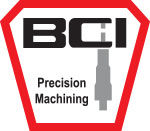The lifeblood of Precision Machining lies almost exclusively in the art of prototyping. Without this important step, it’s almost impossible to move forward with a working setup. Due to the complex and highly technical nature of Precision Machining, a prototype is absolutely necessary to determine how a product run will turn out. It’s also a vital first step to fix any potential design flaws, errors or rough edges that would otherwise show up in the final run.
BC Instruments takes the prototype phase very seriously, because we know just how important it is to our clients and their peace of mind. It also serves as the linchpin for the final production run, which means perfection is a must. Here’s how we approach the prototyping process, and why it should interest you.
THE PURPOSE
A design is nothing if it doesn’t function well in a real-world application. Many things look great in theory, but only through application do we discover flaws in the design process that require fixing. This is always in our minds at BC Instruments when we first initiate the prototype phase. It’s important for clients who are committing to a project, and need to be sure that timelines are not missed due to errors in the production process.
At the same time, we recognize that no two product runs are ever truly alike, nor are the prototyping methods. Variances occur constantly, which is why we approach each new prototype as if it were the first. For instance, BC Instruments recently worked with mass spectrometry leader SCIEX on the creation of specific machined parts. Both SCIEX and our team understood the vital importance of prototyping when it came to adhering to geometry limitations and standardized processes to create said parts. This guaranteed that BC Instruments was able to serve the needs of SCIEX by determining the correct processes needed for final output. None of this could be achieved without prototypes that allowed BC Instruments and SCIEX to confirm the final designs.
THE INITIAL PROTOTYPES
Prototyping can involve one, or several different models depending on how well the design translates to a real-world part. Oftentimes a prototype will serve to confirm the accuracy of a design, while others will point out flaws that require correction. During this phase, our prototypes don’t need to look perfect or polished – they simply need to function, and be accurate. The focus is on communicating the validity of a design before we move to the production run.
This approach can save massive amounts of time, as well as money. The former is sometimes more important than the latter, especially when it comes to the clients BC Instruments services in high demand industries such as Electro-Optic, Medical and Nuclear.
TESTING & RE-TESTING
BC Instruments implements a rigorous testing process to make sure that products move from the prototype phase to production in a seamless transition. This testing involves putting each prototype through its paces to guarantee that it adheres to the exact specifications laid down by the client. Each piece must fit the greater sum of the final project, which is why we eliminate any inconsistencies and issues long before the production run begins.
Clients play an active role in the prototyping phase, as well. Their surveys and opinions are vital as we move into the production phase, and this is especially true during the R&D process. Once the prototype is complete and the client is satisfied, we move into the planning phase to prepare the entire production run. This involves optimizing our workflow and machinery to guarantee on-time (or in many cases, before) delivery, done to precise specifications.
For more information on how BC Instruments can prototype your next design, please contact us today. We’d love to walk you through your process so you can see how we approach this most important of phases.

